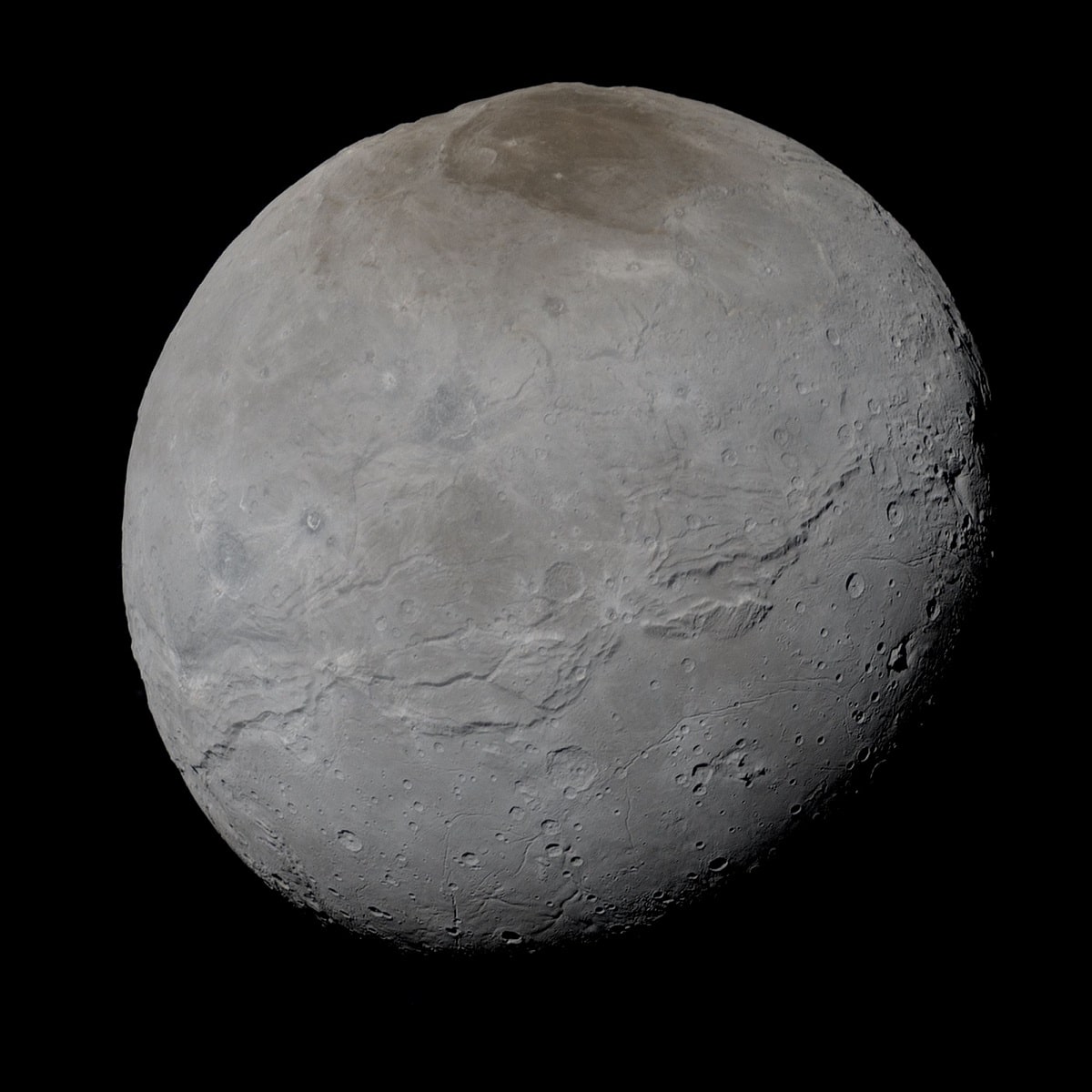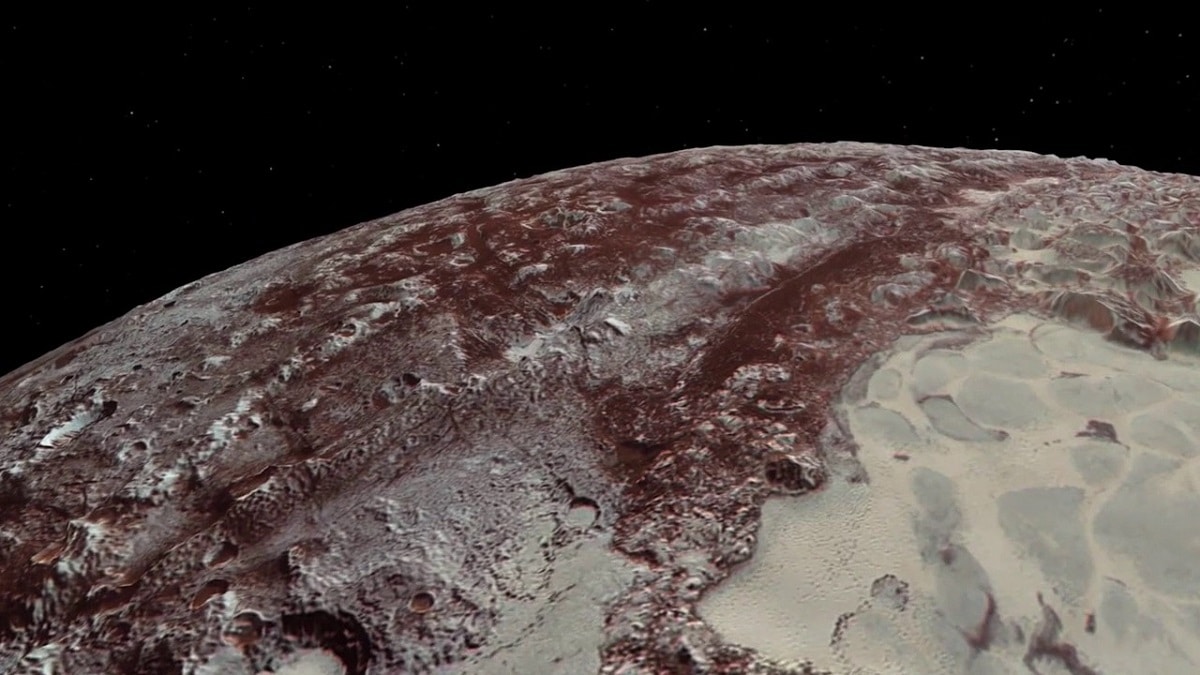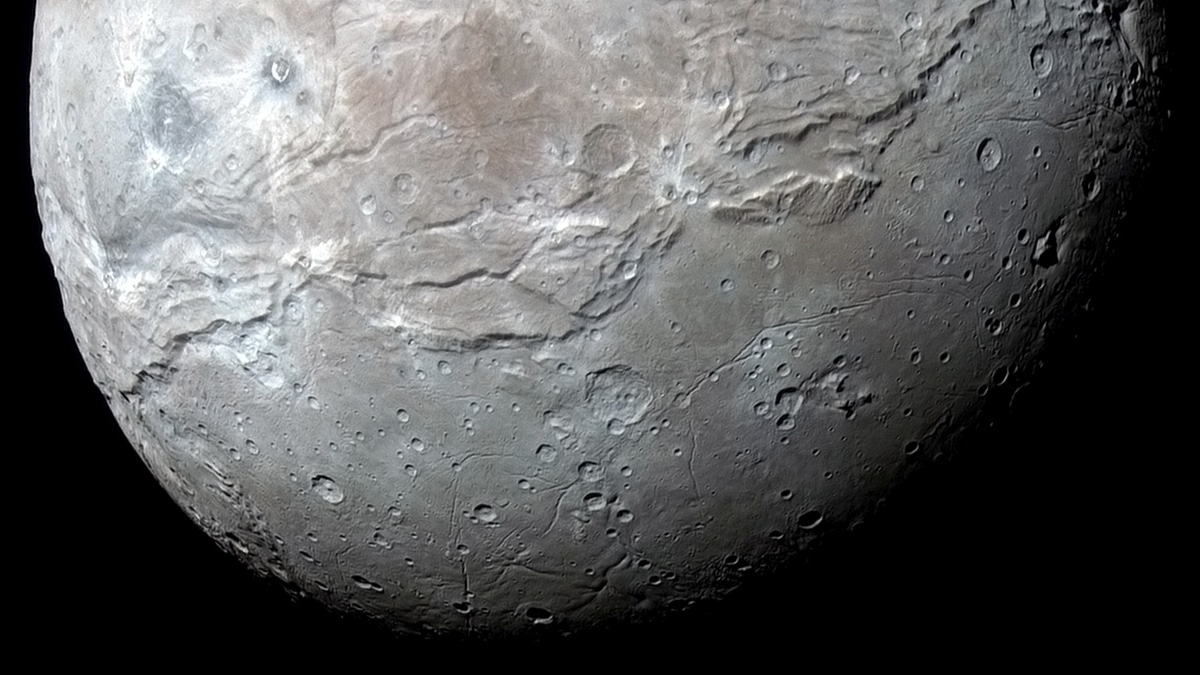
Although Pluto is the smallest planet in our solar system, known as a planetoid, it also has satellites. Charon It is the largest satellite of Pluto. It was discovered by the American astronomer James W. Christie in 1978. Its name is reminiscent of Charon, the boatman on the Akhon River in Greek mythology who was in charge of taking souls to hell.
In this article we are going to tell you everything you need to know about the Charon satellite, its characteristics and importance.
Key features

It is spherical in shape and consists mainly of ice. It has the particularity of always showing the same face to Pluto, and always seeing its same face since both revolve around their center of mass.
For many years, Charon was thought It was the only moon that orbited Pluto, but at the end of 2005 the existence of two other small bodies was announced, provisionally called S/2005 P 1 and S/2005 P 2. In 2006 the Hubble Space Telescope confirmed the existence of these two celestial bodies in June of the same year, and the International Astronomical Union named them, renaming them Hydra and Nix, respectively.
On July 20, 2011, NASA announced the discovery of the fourth satellite orbiting a dwarf planet, also discovered by Hubble, it is P4 (provisional name), the smallest of the 4 satellites discovered so far. On July 12, 2012, NASA announced the discovery of a smaller moon, between 10 and 24 km, provisionally named P5, which was detected again thanks to Hubble observations. In July 2013, the two small satellites were named Cerberus and Styx, respectively.
NASA's New Horizons probe was launched in 2006 with the primary goal of visiting Pluto and Charon. It arrived on July 13, 2015. In July 2013, it sent back the first images showing Charon as a separate object from Pluto.
Discovery of the satellite Charon

Charon was discovered on June 22, 1978 by US Naval Observatory astronomer James W.. Christie, who detected something very peculiar in images of Pluto taken by the Flagstaff Observatory telescope. The resulting image shows Pluto's slightly elongated shape, while the star in the same photo lacks this distortion.
Examination of the observatory's archives revealed that a few other images taken in excellent visibility conditions also showed the elongation, although most did not. This effect could be explained if there was another object periodically orbiting Pluto, but not large enough to be seen by a telescope.
Christie continued her research and found that all observations could be explained if the object in question had an orbital period of 6,387 days and a maximum separation of one arc second from the planet. Pluto's rotation period is only 6.387 days, and since the moon almost certainly has the same rotation period, he deduces that this is the only known planet-satellite system in which the two show the same face consecutively. Existence was wiped out when the system entered a five-year period of eclipses between 1985 and 1990. This phenomenon occurs when the orbital planes of Pluto and Charon are marginal relative to the view from Earth. This happens only twice in Pluto's 248-year orbital period. Fortunately, one of these eclipse intervals occurred shortly after Charon was discovered.
The Hubble Space Telescope took the first images of Pluto and Charon resolved as separate disks in the 1990s. Later, the development of adaptive optics made it possible to resolve individual disks using ground-based telescopes as well.
With the discovery of Charon, the theory that Pluto was a moon escaped from Neptune was discarded. Charon has a diameter of 1.208 kilometers, just over half the size of Pluto, and an area of 4.580.000 square kilometers. Unlike Pluto, which is covered in nitrogen and methane ice, Charon's surface appears to be mostly water ice. It also seems to have no atmosphere. In 2007, observations of ammonia hydrates and crystals on the surface of Charon by the Gemini Observatory indicated the presence of an active "low-temperature heat source."
The mutual eclipse of Pluto and Charon in the 1980s allowed astronomers to analyze Pluto's spectral lines and the combination of the two stars. By subtracting Pluto's spectrum from the total spectrum, they were able to determine the composition of Charon's surface.
Composition of Charon

Charon's size and mass allowed us to calculate its density, knowing this we can say that it is an icy body and contains a smaller proportion of rock than its companion star, supporting the fact that Charon was formed by Pluto. A giant impact on the frozen mantle.
There are two conflicting theories about the interior of Charon: Some scientists believe that it is a single body like Pluto, with a rocky core and an icy mantle, while others believe that Charon has a unified composition. Evidence has been found that supports the first hypothesis. The discovery of ammonia hydrate and crystals on Charon's surface indicates the presence of an active "low-temperature heat source." The fact that the ice is still in a crystalline state suggests that it was deposited recently, since solar radiation would have degraded the ancient ice to an amorphous state after about 30.000 years.
Training
Pluto and Charon are thought to have been two objects that collided before entering each other's orbits. The collisions are violent enough to boil volatile ices like methane, but not violent enough to destroy them.
In a modeling article published in 2005, Robin Canup proposed that Charon could have been formed about 4500 billion years ago by a giant impact, similar to the Earth and Moon.. In this model, a large KBO crashes into Pluto at high speed, destroying itself and dispersing most of the planet's outer mantle. Charon was then formed from the fusion of the remains. However, such an impact would result in a rockier, icier Charon than Pluto scientists have discovered.
I hope that with this information you can learn more about Charon and its characteristics.